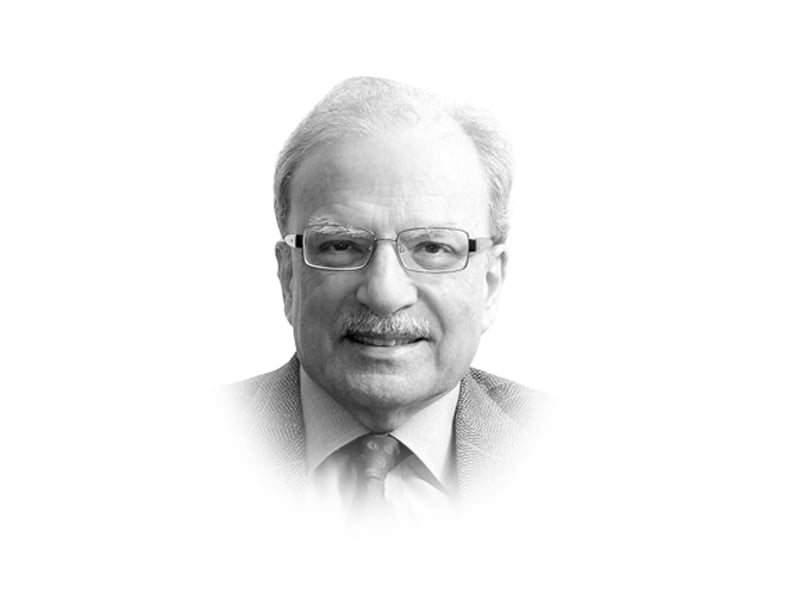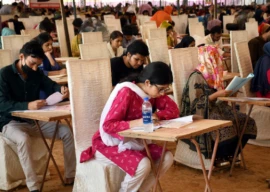
I will begin with population growth. According to the government, population in the 2010s is increasing at the rate of two per cent a year. With about 185 million in 2013, it is more than six times its size when what is called Pakistan today became an independent state. An increase from 30 million in 1947 to 185 million in 2013 implies a rate of growth of 2.8 per cent a year over this period. This did not remain steady all this time. At the time of its birth, Pakistan’s population was increasing at the rate of less than two per cent a year. The pace picked up in the 1950s and 1960s as it did in most of the developing world. The government — sometimes with the help of developing agencies such as the World Bank — was able to provide better health services. As a result, infant, child and maternal mortality rates declined and life expectancy increased. More children were born and fewer people died. In the early 2010s, infant mortality rate was 71 per 1,000 live births, and maternal mortality rate was 276 per 100,000 births and life expectancy was 67 years. This meant that over time, the population became younger. In 2013, the median age of the population was only 22 years, one of the lowest in the world. This means that of the 185 million people who possibly live in the country (this number, at best, is an informed guess since the country has not conducted a population census since 1998 mostly for political reasons), 92.5 million are below that age.
If working age is defined as between 15 and 65 years, Pakistan has about 120 million falling in this category. This group supports another 65 million non-working people (the very young, the very old and the infirm), which means that every non-working person has two people providing support. Pakistan, in other words, has a very low dependency ratio. Economists call this the ‘demographic window of opportunity’, which opens when there are more people working (or able to work) than those they need to support. In Pakistan’s case, this window opened a decade or so ago and will shut in about three decades. Most countries that grew rapidly in the past few decades, such as those in East Asia, made use of this opportunity. This is where public policy enters the picture. With good policies and with good governance, a rate of GDP growth of six to eight per cent a year is not beyond Pakistan’s reach.
Without appropriate policies, the economy will continue to grow at about half that rate. Growth rate is seldom less than the rate of increase in population. It is usually a bit more depending upon how much capital is being accumulated and how much technical change is occurring. Even in stagnant economies — which is what official numbers suggest Pakistan is today — capital continues to be added to the process of production and technological improvements continue to take place. The recent penetration of mobile telephony is one example of the latter. Another example is the rapid replacement of bicycles with motorcycles in most parts of the country. This is speeding up the pace at which transactions take place. Even with poor economic management, the rate of growth will be a percentage point or two above the rate of increase in population. In the current situation, in other words, the economy will inevitably increase at the rate of three to four per cent a year, which is what it has done since the arrival of democracy in the country.
Some Pakistan-based economists believe that these low numbers don’t tell the story of the recent development in Pakistan. There is no doubt that the state of the economy and its performance over time should be analysed on the basis of data, but for Pakistan, statistics on many aspects of economic change are either not available or are seriously out of date. As the newspaper columnist, David Brooks, wrote in a February 2013 article, “if you ask me to describe the philosophy of the day, I’d say it is data-ism. We now have the ability to gather huge amounts of data. This ability seems to carry with it certain assumptions that everything that can be measured should be measured; data is transparent and filters out emotionalism and ideology; that data will help us to do remarkable things like tell the future.” Unfortunately, that is not the case for Pakistan.
Published in The Express Tribune, February 11th, 2013.
COMMENTS (6)
Comments are moderated and generally will be posted if they are on-topic and not abusive.
For more information, please see our Comments FAQ











1735025557-0/Untitled-(96)1735025557-0-270x192.webp)







Nothing has changed. Nothing will change for the people ever. Nothing.
Not until and unless people themselves will be prepared to work to bring a change in their habits and attitude which will enable them to be able to come forward to join hands with others to install a new and just system, which is ‘democracy of the majority’.
Such a system can be evolved only and only by the participation of the masses. Participation by organizing ‘Co-operative Collectives’ of the people, by the people, for the people, in every locality and every qusbah. This is the only way people can organise the means to organising to have their ‘true and effective representation’. By coming together people will be able to become far more knowledgeable thus vigilant and observant of how their hard-earned tax money is being used or abused. Peoples’ power thus gained through thousands of ‘Co-operative Collectives’ all over the country will ensure that the people can take corrective actions through their effective representations and avoid any adversity to their common interests. Charity begins at home. So the initiative to organize "Co-operative Collectives" has to come from the people themselves in the localities where they live. The initiative of mobilising the masses to such a far reaching and beneficial goal has to come from the intellectuals, thinkers, writers social workers etc. Have we not tried all other systems which failed us so should we not try this and see if it fails.
Black economy / un-documented economy etc; whatever name one may call....is sustaining our country for the time being...it is not a long term solution...even money through corruption is running the wheel of economy as poor people strives to survive via this unholy means.....
True,i agree with the above statments,here in our country unfortunitly our educti0n rati0 is so much low,therefore we are facing hurdles in development of country. If their is increase in eduction level.ppl eductd m0re so then population will c0me in c0ntrol. M0st people of ourcountry are uneducted nd living in urban areas,so they didnt kwn about this c0untry that what is the need of hour,i say this that they r unaware,and this all credit goes to our govt nd esp politcian,becuse they only prefer cities nd forget abt their rularl areas,villages,so that in real gives heavy cost to cities people. Another thing abt data so their is n0 real statistcian r gvt statiscian that gve true data on poverty,educti0n r s0mthng else.
I do believe that the actual economic growth is around 5 to 7 %. The grey or the black economy is THRIVING due to amazing connections Pakistanis have found in Afghanistan, Gulf area and China. While i was in Pak on a recent gov nitiative to measure the black economy, i found out how rich this country really is. Pakistan can still survive without foreign investment merely because our population is huge and any business that can sustain itself in first few years, will find itself awash with money.
The problem that the author seems to overlook is that reasonable investment to GDP ratio is a necessity for any sustained GDP growth. But instead, capital is fleeing the country. Capitalist Pakistanis prefer to park their capital in foreign countries rather than invest in Pakistan. Foreign investment has dried up due to the rise of extremist radical religious ideology and terrorism. Pakistan, being a security state, has not given any priority to economic investment, education of the masses or welfare of the people.
The young population "dividend" that the author refers to, has been for the past three generations, been trained in bigoted obscurantist religious dogmatism and distorted history instead of giving them modern education. As a result, a significant portion of this "population dividend" has become hard-core Jihadists or Jihadi sympathizers. In this respect, Pakistan can't be compared to the East Asian and other developing economies, none of which had to deal with the rise of religious zealotry and radical Jihadist Islamism. In other words, Pakistan's youth dividend, rooted in radical Islamism that is on a time-warp back to the 7th century, will be more of a liability if not a "global migraine".
In summary, unless and until Pakistan reshapes and redirects it priorities, from geopolitical militarism, to the welfare and education of the people and stops radicalizing its youth to serve the misplaced geopolitical games, there will not be much economic progress.
“the process of production and technological improvements continue to take place…example is the rapid replacement of bicycles with motorcycles in most parts of the country.” The Netherlands, Denmark, Germany and now other developed countries are replacing cars/roads with bicycles/cycle lanes to make their cities economically prosperous, socially equitable and environmentally sustainable. While economist in Pakistan still believe on myths that motorcycles/cars and roads will bring economic growth. Pakistan needs fresh thoughts not discarded one.